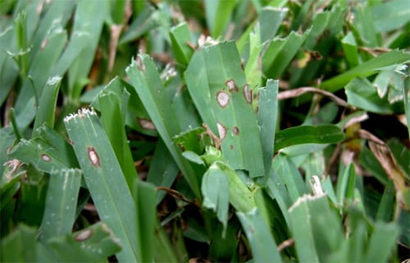Mowing is the most important maintenance practice for a healthy lawn. Proper mowing height with a razor sharp blade increases turf density and promotes deeper root growth, both of which lead to a stronger lawn that is more competitive against weeds and stresses such as drought, insects and disease. Proper mowing practices, along with fertilization and irrigation, can largely determine the success or failure of a lawn.
| Turfgrass Species | Mowing Height |
| St Augustine (most common) | 4+” |
| St Augustine (dwarf, uncommon) | 2.5” |
| Zoysia (fine types, uncommon) | 0.5 to 1.5” |
| Zoysia (coarse types, common) | 2 to 2.5” |
| Bahia | 3 to 4” |
| Bermuda | 0.5 to 1.5” |
Mow so that no more than 1/3 of the leaf blade is removed (mow St Augustine to 4” when the height reaches 6”). Effects of “scalping,” or removal of too much shoot tissue at once, can permanently damage the turf. Adjust the cutting height by setting the mower on a sidewalk and using a ruler to measure between the ground and the blade. This is typically the highest available setting on your mower.
Sharpen the mower blade frequently enough to prevent tearing of the leaf blades. The mower blade must be removed and sharpened with a grinding wheel and razor sharp to the touch. Mowing with a dull blade causes severe damage to all turf and will cause turf to develop grey leaf spot fungus.

Turf blades shredded from dull blade

Turf becoming diseased from dull blade
The use of a walk behind push (self-propelled) mower is strongly recommended to avoid soil compaction. Heavy riding lawn mowers can weigh up to 2,000 pounds when fully loaded. This creates an enormous amount of stress throughout your lawn every week, especially when mowed while the soil is wet. You must mow with a different pattern each time it is cut. This is especially difficult to do on a small lawn. If your property is mowed with a riding mower then core aeration is strongly recommended once or twice per year.
If you have any questions please call or text Land Shark Pest Control at 407-580-8703
